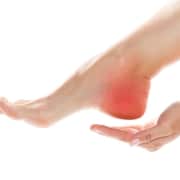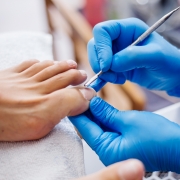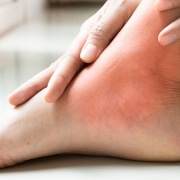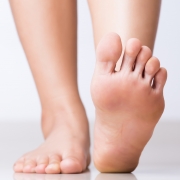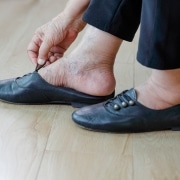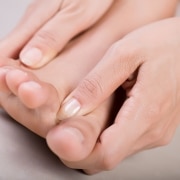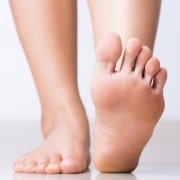What to Look For in Quality Shoes
Did you know that poorly made shoes can negatively impact spine health? If you aren’t wearing high-quality shoes, you are probably experiencing severe back pain. More often than not, back pain can stop you from doing everyday tasks like lifting heavy objects, exercising, playing with your children, and even working at a desk. Many people with back pain aren’t able to enjoy road trips either. Your Austin, TX podiatrist wants you to know that, instead of wearing poorly made shoes that aren’t good for your spine, you should look for shoes with the following features.
Cushioning
When you’re shopping for shoes, make sure to choose ones with adequate cushioning to greatly reduce impact. A shoe with proper cushioning will successfully absorb shock, lowering stress on your back. Just so you know, the part of the shoe that absorbs shock and provides cushioning is known as the midsole. A great way to test the cushioning is to press the midsole with your thumb. If you typically strike the ground hard when walking or running, shoes with an extremely cushioned midsole will be a lifesaver because you won’t feel a shock going up your legs and straight up your back.
Arch Support
The arch support of a shoe is an extremely important feature because it may be able to get rid of your back pain. Whether you have a neutral, low, or high arch, you should wear the right shoes for your arch type to eliminate excessive pronation. The right shoe will correspond to the natural arch of your foot.
Custom Molded Orthotics
Custom molded orthotics are custom-made shoe inserts that are individually crafted to fit your feet. Custom molded orthotics are used to correct a wide variety of foot and ankle-related problems, as well as issues related to the knees, hips, and lower back. Custom molded orthotics are also used to treat different types of problems that affect your foot including Bunions, Hammertoes, Flat feet and problems with the way you walk.
Custom-made orthotics are made of durable materials, that may incorporate both hard and soft features, depending on your specific needs. Custom-made orthotics can be crafted to fit inside most types of footwear, including athletic shoes and high heels.
Dr. LaMour can have custom-made orthotics made for your shoes that are made specifically for your foot. He will begin your custom-made orthotics fitting with a review of your symptoms and an examination of your foot. Then he’ll scan or use a plaster cast to get a mold of your foot. The mold will ensure that your custom-made orthotic will fit perfectly and ensures that the orthotic is tailored to address your underlying problem. Once the mold is created, it’s sent to a lab that specializes in the highest-quality custom molded orthotics.
Low Heel
When it comes to your shoe’s heels, the “lower the better” is generally a good rule to follow. The ideal height of a heel should be one to two inches. For a shoe to be good for your spine, it’s heel definitely shouldn’t be higher than two inches. The beauty of shoes with low heels is that they won’t misalign your spine or cause back pain.
When you wear high-quality shoes, you can drastically improve your posture and back pain. Our podiatrist in Austin, TX can help determine the whether your most commonly worn shoes are contributing to your spinal issues. Contact us today to start experiencing optimal spine health.




